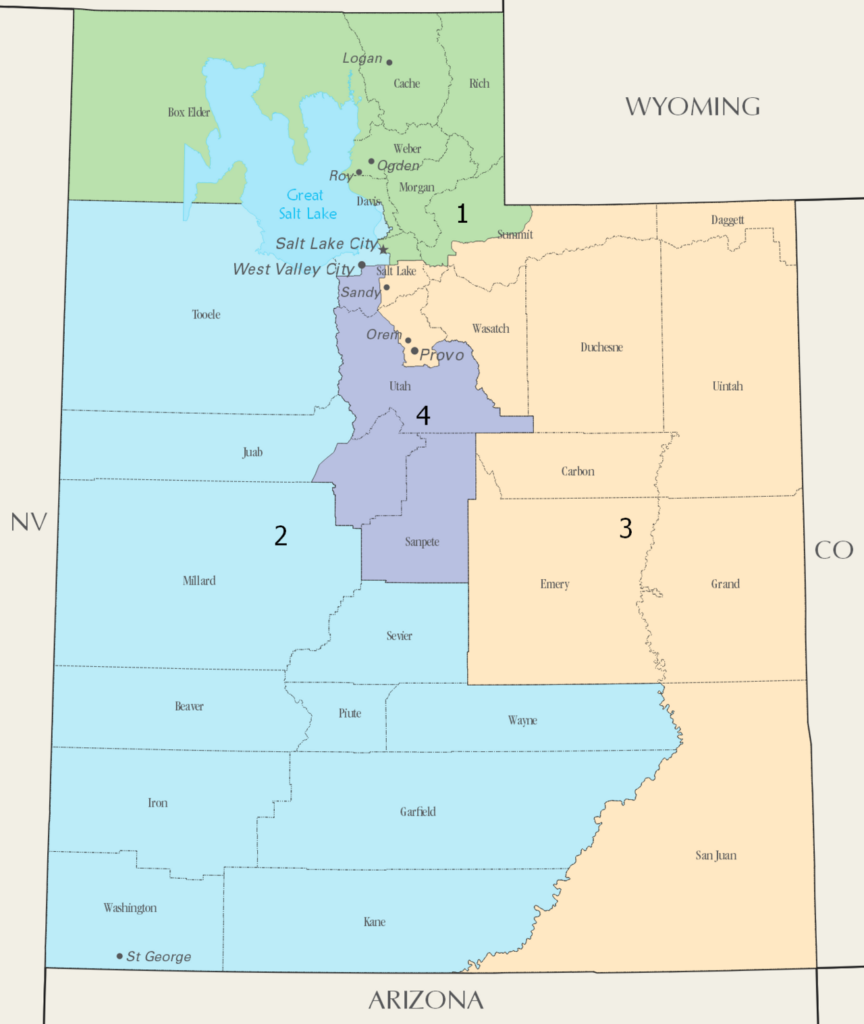Senatus Populusque – Previewing November’s other elections. Part II – The House, Governors and Ballot measures

The House
The US House of Representatives has 435 members. Each state is allocated 1 House member initially and then the remaining House members are allocated proportionally. The whole House is elected every 2 years.
After every decennial census, the House undergoes a reapportionment process, where the allocation of seats for each state is adjusted in line with population changes. Each state (with more than one seat) then redraws the boundaries of its districts. This process is left up to each state to decide (rather than having a national equivalent of the UK boundary commission).
We can’t really talk about the US House without mentioning gerrymandering. The first use of the term was in 1812 after a Massachusetts district that was said to have the shape of a salamander and was signed into law by Governor Elbridge Gerry.
The main methods used to gerrymander are packing and cracking.
An example of packing is Alabama’s 7th congressional districts, which combines the majority black precincts of Birmingham and Montgomery

Alabama’s 7th congressional district – source Wikipedia
An example of cracking is in Utah, where the Salt Lake City area is split across all 4 of Utah’s congressional districts

Utah’s congressional districts – source Wikipedia
We are increasingly seeing legal challenges to the boundaries put in place to the boundaries decided by each state. The voting rights of 1965 put in place a requirement for majority-minority districts, where minority voters would constitute the majority of the population. What this has tended to mean in practice for many southern states, is that there is one safe Democrat district (like Alabama’s 7th above) but all the remaining districts are safely Republican.
One of the things that is less well-known about gerrymandering is that it is not only used for partisan advantage. As the House is up for election every 2 years, there is a benefit to both sides to protect incumbents. For example, due to demographic change, a number of districts in the Dallas and Houston suburbs became more marginal. Texas Republicans responded by breaking up all of these districts and replacing them with safe Republican and safe Democrat districts.
What this means is the number of swing districts has decreased over time and these are now mainly in states, where there are either independent boundary commissions e.g. California or where courts have intervened to draw maps e.g. New York
Real Clear Politics estimates there are 207 safe or leaning Republican districts, 196 safe or leaning Democrat districts and only 32 toss up districts.
What this means is that the House is likely to be extremely close again, impacting the ability of whichever party wins to govern effectively. Currently polling for the generic ballot is Democrat 47.0 – Republican 45.7
Governors
11 states are electing their Governor and Lieutenant governor – Delaware, Indiana, Missouri, Montana, New Hampshire, North Carolina, North Dakota, Utah Vermont, Washington and West Virginia
Of those, the most interesting is the North Carolina race where incumbent Democrat Roy Cooper is term limited.
The Democrat candidate is Josh Stein who is currently Attorney General of North Carolina. His Republican opponent is the current Lieutenant Governor Mark Robinson. The latter’s campaign spectacularly blew up, when a series of comments that Robinson had made on a porn site came to light, including Robinson describing himself as “a black Nazi” and admitting to watching women in the showers when he was a teenager.
Robinson’s disastrous campaign has given the Democrats hope in North Carolina, although it should be noted that they won the Governorship in both 2016 and 2020, when Trump carried the state.
Ballot measures
A number of states also have ballot measures on the ballot paper (think referenda). In most of the Eastern and Southern states, citizens can petition the legislature but the latter has the final say whether something goes on the ballot or not. In most of the Western and Great Plains states, citizens can put initiatives directly on the ballot bypassing the legislature.
Arizona, Colorado, Florida, Maryland, Missouri, Montana, Nebraska, Nevada, New York and South Dakota have pro abortion measures on the ballot. Nebraska also has an anti-abortion measure.
A number of pro-abortion ballot measures have previously passed including in red states such as Kansas, Kentucky and Montana. The Democrats hope that these abortion ballot measures can drive up turn out particularly in Arizona, Florida and Nevada.
Florida, and the Dakotas have measures to allow recreational use of cannabis. Nebraska has a measure to allow medical marijuana. Massachusetts has a measure to allow those over 21 to grow or possess psychedelics.
Arizona, Colorado, Idaho, Montana and Nevada have measures to introduce a blanket primary for congressional and state elections.
Traditionally, US congressional elections have a 2-stage process. Each party has a primary where they select their candidate and then each party’s candidates face off against each other in the main election.
A criticism of this system is that in the large number of safe districts, the general election becomes a formality and so it encourages candidates to move to the extremes so as to win the more closely contested primary.
The blanket primary replaces this system. There is a single primary, which includes multiple candidates from the Democrats, Republicans and 3rd parties and then the top 4 or 5 advance to the general election. The benefit is that it makes it harder for the parties to control and makes it easier for centrists to get through.
The downside is that the parties can’t control who runs under their banner. Alaska already has this system in place and one of the “Democrat” candidates in the general election for Alaska’s sole House seat, Eric Hafner is in prison in New York and has reportedly never even been to Alaska (strangely you don’t have to live in a state to run for office there, but do have to take up the office).
Gareth of the Vale